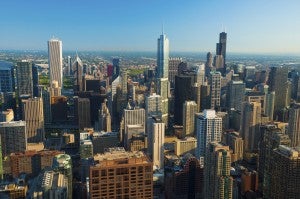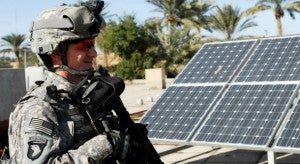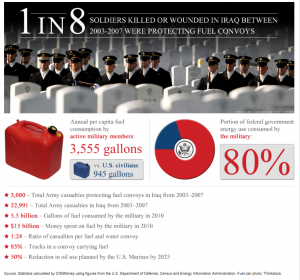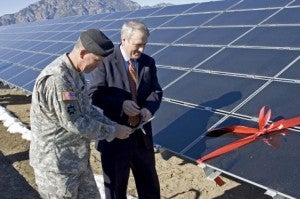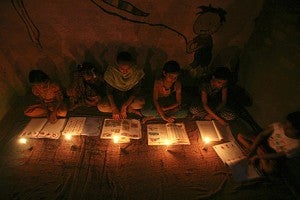This commentary was originally posted on EDF’s Texas Clean Air Matters blog.
Just in time for the holidays, the U.S. Environmental Protection Agency (EPA) delivered a valuable gift to residents of the Dallas-Fort Worth area: the promise of stronger protections against the harmful public health and environmental impacts of ground-level ozone (the main component of smog). Specifically, EPA announced on January 7 that it has decided to deny 19 petitions filed by the state of Texas and other parties last summer — all demanding that the agency reverse its determination that Wise County, Texas contributes to high ozone levels in nearby Dallas-Fort Worth (EPA’s responses were signed December 14, 2012). EPA’s action means that polluters in Wise County will have to do their fair share to reduce ozone levels in Dallas-Fort Worth, which have been among the worst in the country for many years. Because of the importance of this issue to the public health of Texans, EDF has already taken steps to defend EPA’s action in Federal court.
Background
Ozone pollution has long been regulated under the Clean Air Act because of the tremendous hazards that ozone poses to public health and the environment. High ozone levels lead to respiratory distress and disorders; decreased lung function; increases in emergency room visits and sick days; and more. To address the serious problem of ozone, the Clean Air Act provides a multi-step process for ensuring that all areas of the country achieve acceptable ozone levels. First, EPA must establish nationwide air quality standards for ozone (called National Ambient Air Quality Standards), which are required to be strong enough to protect public health with an adequate margin of safety. Second, EPA must designate which areas of the country meet those standards, and which do not. Lastly, states are required to submit plans for achieving and maintaining compliance with EPA’s ozone standards — with especially strict requirements for areas that currently do not meet the standards.
EPA last updated its ozone air quality standards in March 2008. The revised standard requires that average ozone concentrations over an 8-hour period remain at or below 75 parts per billion (ppb) — a level that is more protective than the previous standard set in 1997, but still significantly higher than the range of 60 to 70 ppb recommended by EPA’s own Scientific Advisory Committee. EDF has consistently advocated for a stronger ozone standard, and has even taken EPA to court over this issue together with other public health and environmental organizations. At the same time, EDF has also fought hard against attempts to weaken the 2008 ozone standards or stop their implementation.
Designation of Wise County
On May 21, 2012, EPA issued a regulation designating 45 areas of the country as out of compliance with the 2008 ozone standards – including a group of ten counties in the Dallas-Fort Worth area, which had long failed to meet the earlier and less stringent ozone standards. For the first time, however, the Dallas-Fort Worth designation also included Wise County, Texas, due in large part to emissions of nitrogen oxides and volatile organic compounds from a recent boom in oil and gas production in the area.
As EPA explained in a detailed technical analysis, Wise County was included in the Dallas-Fort Worth ozone designation because of the county’s contribution to unhealthy levels of ozone. Among other things, EPA found that ozone monitors less than half a mile from the county line were recording unhealthy levels of ozone; that Wise County emits some of the highest levels of ozone-forming pollution in the 19-county area surrounding Dallas-Fort Worth; and that the prevailing winds on high-ozone days are responsible for bringing that pollution from Wise County to the nearby city.
Ensuing Litigation and Requests for Reconsideration
EPA’s determination was reached after a lengthy process during which the state of Texas and other stakeholders had ample opportunity to submit comments and data on Wise County’s contribution to ozone in Dallas-Fort Worth. However, this didn’t stop the state, some local governments, and various oil and gas producers and trade associations from trying to stop the designation of Wise County by filing a total of 19 petitions asking EPA to reverse its decision. The state of Texas, Wise County, and four industry parties also filed legal challenges to EPA’s determination in the D.C. Circuit Court of Appeals — and EDF responded by moving to intervene in defense of EPA’s action.
EPA’s Denial of Reconsideration and Next Steps
In detailed responses to the petitions, EPA reaffirmed its analysis of Wise County’s contribution to the local ozone crisis and offered rebuttals to each of the major arguments advanced by the petitioners. EPA’s responses confirm that the designation of Wise County rests on the best available science. EPA’s action is also an important advance for public health — ensuring that polluters in Wise County will do their fair share to address ozone pollution in the Dallas-Fort Worth area, and that the important protections of the Clean Air Act extend to ozone-contributing areas and sources that have been overlooked in the past.
We hope that the parties challenging the Wise County designation will ultimately decide to demonstrate leadership by becoming part of the solution to the air quality challenges facing Dallas-Fort Worth. In the meantime, vital work remains to be done to defend EPA’s actions in court: the ongoing D.C. Circuit challenges to the original designation of Wise County, which were suspended while EPA processed the reconsideration petitions, are likely to resume in a matter of weeks. In addition, EPA’s decisions on the petitions may provide fresh fodder for additional legal challenges in the D.C. Circuit. EDF’s legal team stands ready to vigorously defend EPA’s decision in the months ahead.











